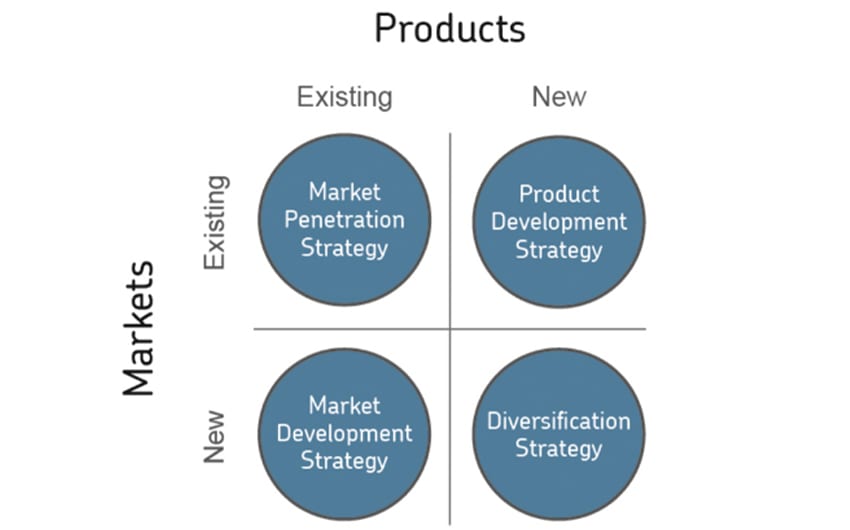
Ideally, Lead Generation begins with a comprehensive, objective review of your key positioning elements—the ways your business is positioned in the marketplace, and what makes you different or unique.
Determining your positioning might include conducting a SWOT (Strengths, Weaknesses, Opportunities, and Threats) Analysis, assessing the competitive landscape to understand rivals’ key differentiators, analyzing your website, undertaking market research to identify industries with the best growth potential, reviewing your marketing collateral, and even creating Lead Generation-specific outreach documents such as letters and call scripts.
Taken together, these pieces solidify your understanding of what sets your business apart from competitors and help you articulate those unique attributes. Doing so builds your confidence in and clarity about your company’s value, optimizing your customer-facing presentation, and creating the framework for documents and structures needed in advance of a Lead Generation effort.
Getting Started
The positioning elements listed below are just a starting point; you can always add/modify specific things that your outreach will require. In general, however, the following will provide an effective means of positioning your business for Lead Generation success.
What are we promoting, and to whom?
- Like any worthwhile strategic effort, Lead Generation should begin with the end in mind. Ask yourself what, exactly, you hope to accomplish; are you hoping to expand market awareness of your products? Make further inroads with key industries? One way to approach this question is through the Ansoff Matrix. Simply put, this is a means of visualizing whether you will focus on selling new or existing products to prospects in new or existing markets. Existing products sold to existing markets generally entail pure market penetration; selling those same products to clients in new markets, is referred to as market development.
- New product offerings, on the other hand, can be targeted to your existing markets (often referred to as product diversification) or new industries and markets, a true diversification play.
- There is always the option of a hybrid approach. You might focus on market penetration, advancing your relationships with players in known markets, while mixing in a few new ones to broaden the base of potential new customers.
How do we address our competitors?
- The beginning of a Lead Generation process is an excellent time to take stock of the competitive landscape. It could be as simple as checking in with your key competitors’ web presence to see if they have any new products, capabilities, or value messaging.
- You might also take an in-depth look at any M&A activity or recent press releases to learn more about strategic shifts or review their sales bench to better understand their market or geographic focus.
- Whatever the approach, whether it’s a more cursory review or a deeper dive, any opportunity you have to assess competitors’ messaging and marketing focus to inform your own is beneficial. It could also give you a chance to counter any specific holes you see in their value statements; if your own capabilities outpace theirs, your outreach materials and calls are a perfect opportunity to put your own story in front of prospects.
Which industries will we focus on?
- Depending on the outcome of your Ansoff Matrix (or similar) exercise, you should be able to build a short list of industries that represent your first outreach targets. If the Lead Generation project is intended to penetrate into existing industries, consider creating a list of these based on their sales volume; if your strategy is aimed at market expansion, brainstorm a few new industries that you feel might have end-use applications for your products or services.
- Our experience has shown that while blending new and existing industries can be an effective approach, it is often wise to weight the mix in favor of areas where you already have an established presence. Being able to point to successful relationships in the marketplace can be a quick credibility boost with a new prospect, and you are likely to have a familiarity with the specific challenges and opportunities those companies face.
- Beyond the question of new versus existing, market research is an important way to refine your list to focus on the industries that offer the best short-term growth outlook, favorable numbers of prospects in areas where you can service clients, and more.
What is the message?
- With a broad outline of who you plan to approach, what products will be on the top of the list, and how you plan to navigate the competitive landscape, the next step is developing messaging that will build interest before you make your first phone calls.
- Much like with the SWOT analysis, the crafting of your introductory letter and call script may benefit from a group effort. Marketing might have the final say, but it could be valuable to check in with engineering, production, and other groups to learn what they think set you apart.
- What makes your offering unique? How do your capabilities compare to those of your competitors? In what ways does your value proposition equate to an ability to solve the problems that exist among your prospects?
- Once these elements are defined, build them into a letter, script, and possibly an industry/product-specific landing page on your website to enable the first steps of outreach.
If you are new to the Lead Generation process, we encourage you to read more about the ways to maximize the return from your Lead Generation effort and how a SWOT analysis can help identify the opportunities for top-line growth. In our next article, we will take a more in-depth look at the ways to use market research to target industries and locations that hold the most promise, build and vet a list of prospects, and other key steps in the Lead Generation process. DVIRC’s Market Research department, which has a great deal of expertise in this area, is standing by to help with the heavy lifting. And as always, click here or contact us to learn more about DVIRC’s Lead Generation services.
